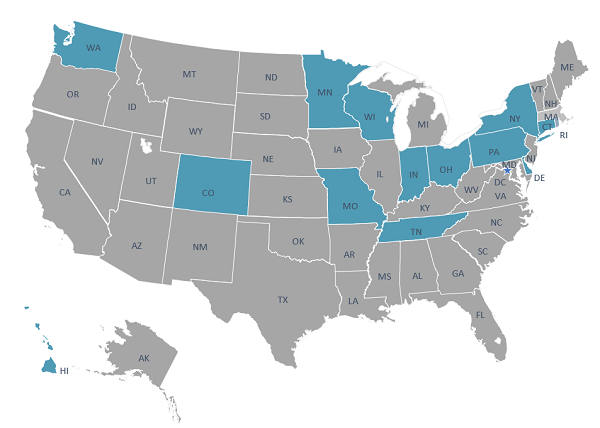by Staff at MediSked
The COVID-19 pandemic has highlighted the necessity of reliable high-speed internet connections, as well as the disparities in access and availability of that service impacting home and community-based services (HCBS) populations.
As regions across the United States began to address the pandemic with stay-at-home guidance, video calls and telehealth visits created vital connections between individuals and their circles of support. Care management, and in some instances direct support, was transferred from in-person interaction to video conferencing. Online portals to enable messaging and a repository for health records became essential to ensuring that agencies, care managers, and payers could maintain access to services.
In addition, programs sprang up to keep individuals connected during an emotionally challenging time. MediSked employees created one such program with Virtual Visits to share their time — not to mention pets and taste in movies — with individuals who previously had more access to social interactions through community-based programming.
But what happens when individuals don’t have access to reliable internet? This gap is particularly large for the disability population — only 57% of adults with disabilities have access to the internet at home, compared with 76% of adults without disabilities.[1]
“The COVID crisis is magnifying what we already know — that it is the 21st century and we live in a world where technology is a necessity, not a luxury,” noted MediSked Advisor Council Member Jean Tuller, a nationally recognized consultant in the area of systems transformation and state Medicaid reform.
Several states have developed technology initiatives, sometimes referred to as “Technology First.” These programs apply a policy that expands access to technology for people with intellectual and developmental disabilities to increase independence. ‘Technology First’ states offer an option to utilize remote support and assistive technology within care plans to provide support that is more person-centered. And by making technology a reimbursable service, providers can fund its purchase and use.
A hallmark of this initiative is that technology is considered as the first option when authorizing services. The goal is to identify if a technology option can be used to safely provide supports in-home without needing an in-person provider. Missouri and Ohio, are both Technology First States. They have equipped individuals with devices and supports to increase freedom and access.
The bottom line is that access to reliable high-speed internet is a foundational need for every individual in the long-term services and supports population. The growth of platforms such as the MediSked Person-Centered Portal that connects individuals and their circles of support with vital messages, health records, plans & assessments, budgets, and more demonstrates that technology enables and empowers. And during a crisis, technology is a lifeline. It’s time for every state to consider how they can put technology first.
States Engaged in Technology Consortiums [2]
 Colorado
Colorado- Connecticut
- Delaware
- Hawaii
- Indiana
- Minnesota
- Missouri
- New York
- Ohio
- Pennsylvania
- Tennessee
- Washington
- Wisconsin
COVID-19 Resources:
- Centers for Disease Control
- World Health Organization
- [1] https://www.pewresearch.org/fact-tank/2017/04/07/disabled-americans-are-less-likely-to-use-technology/
- [2] https://www.nasddds.org/uploads/files/Tannis.pdf

